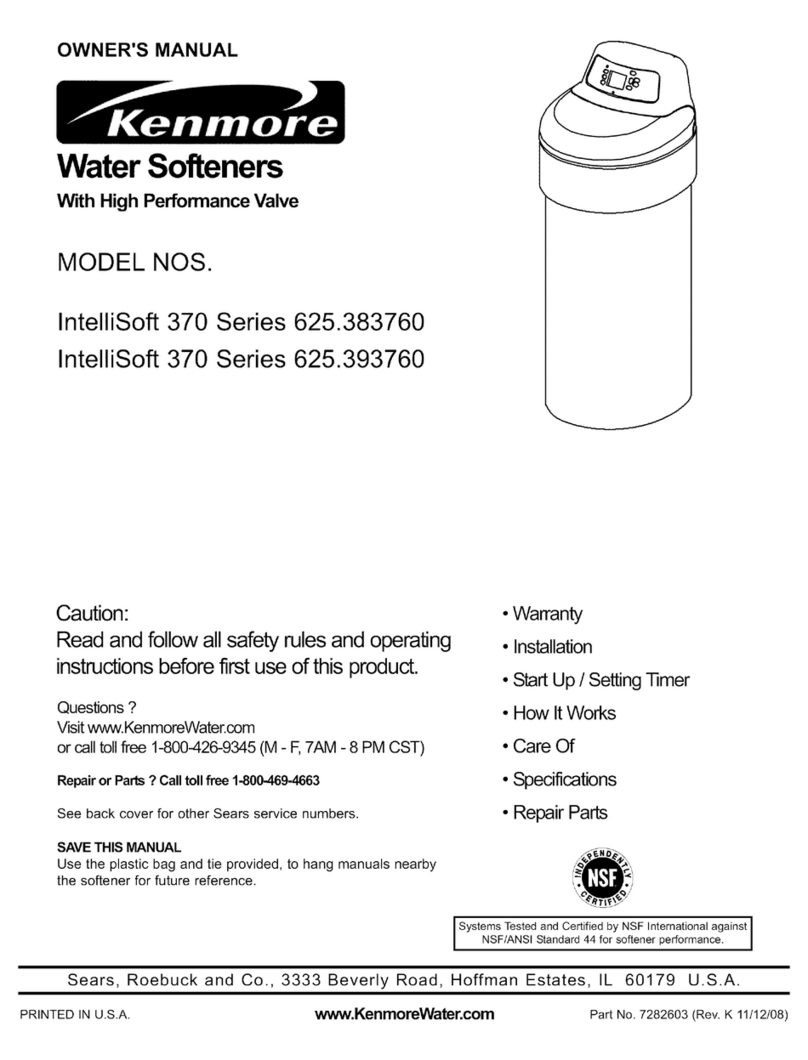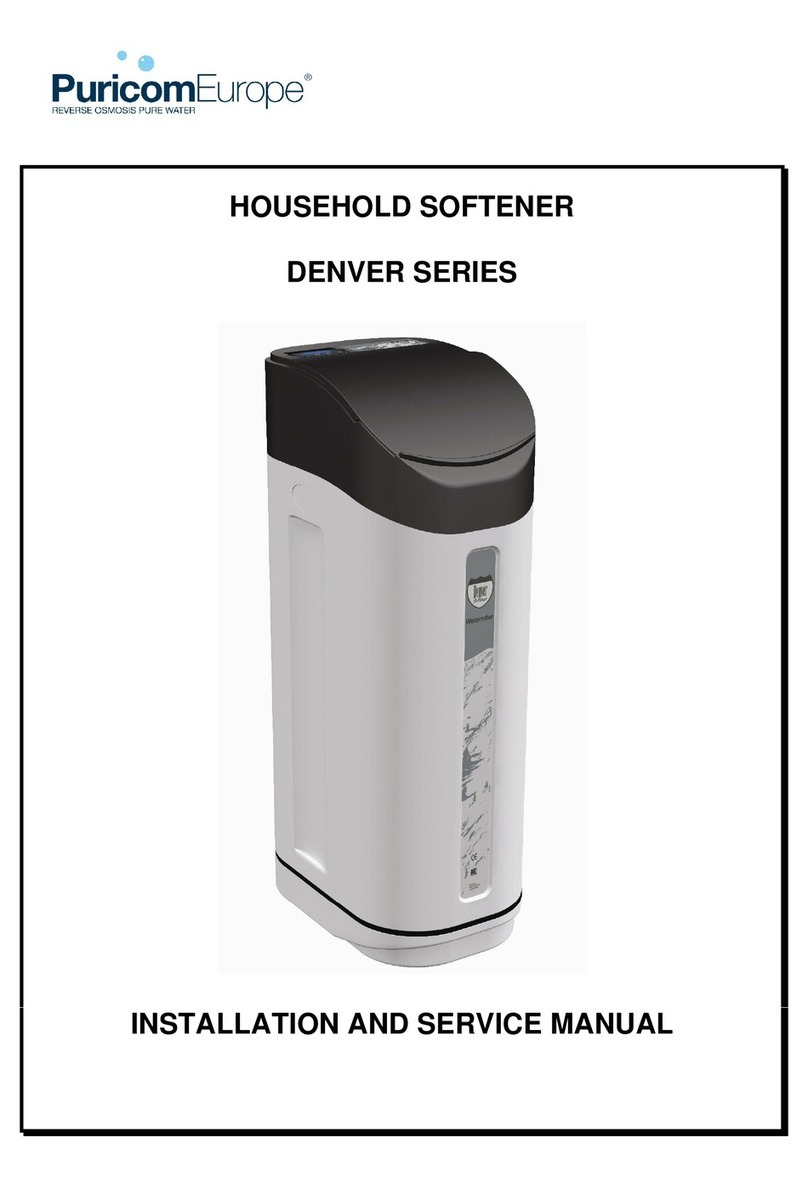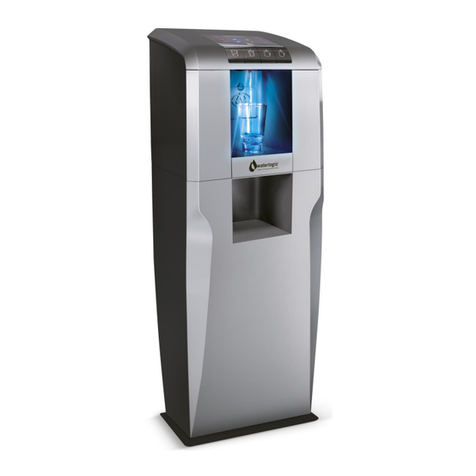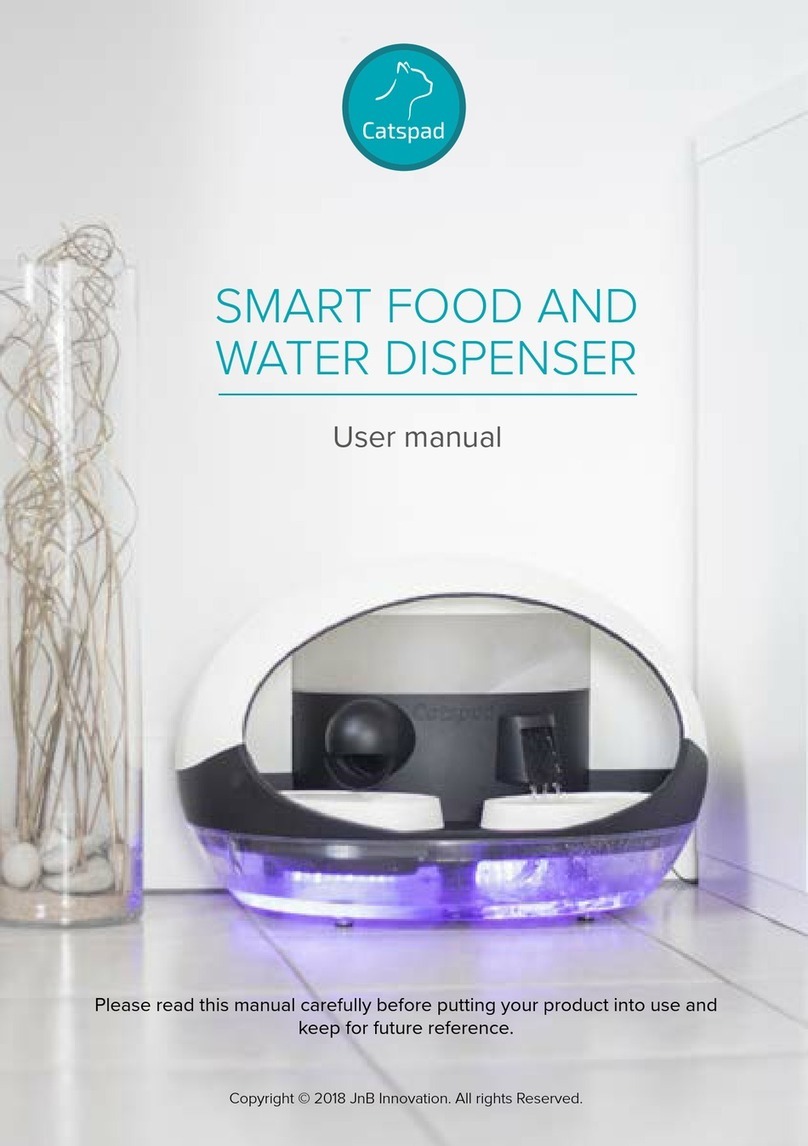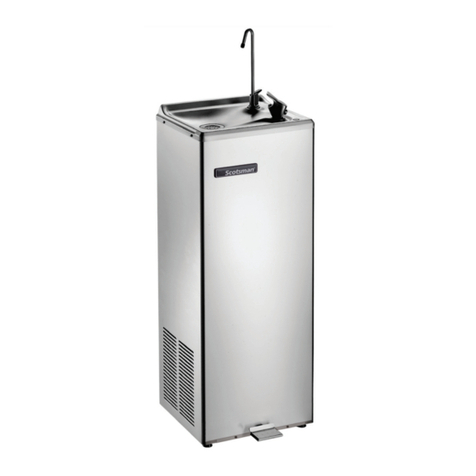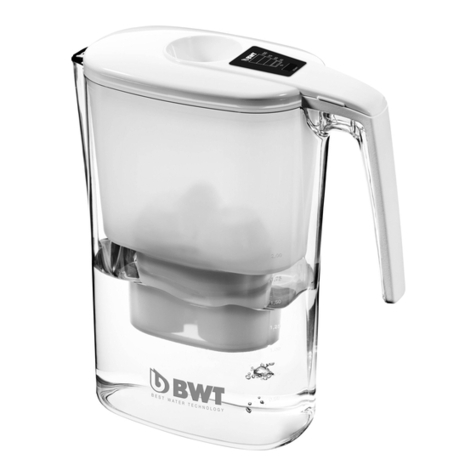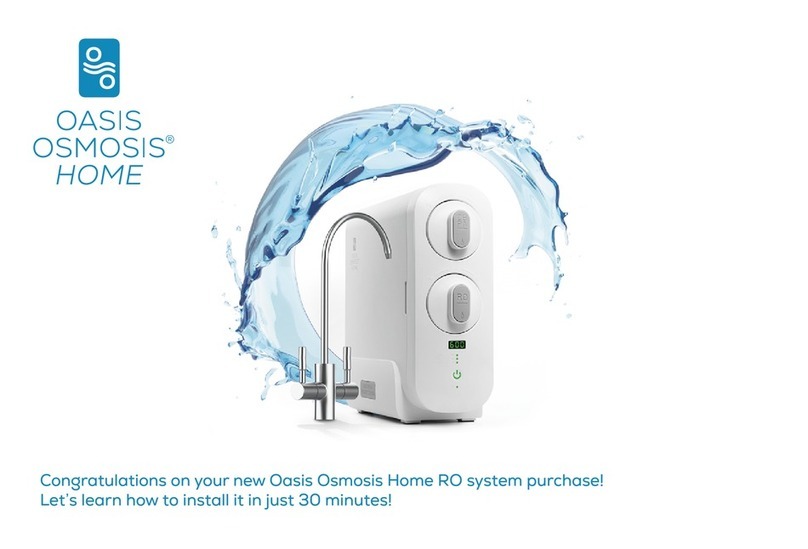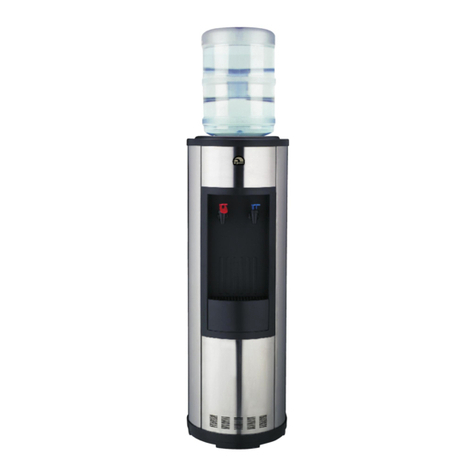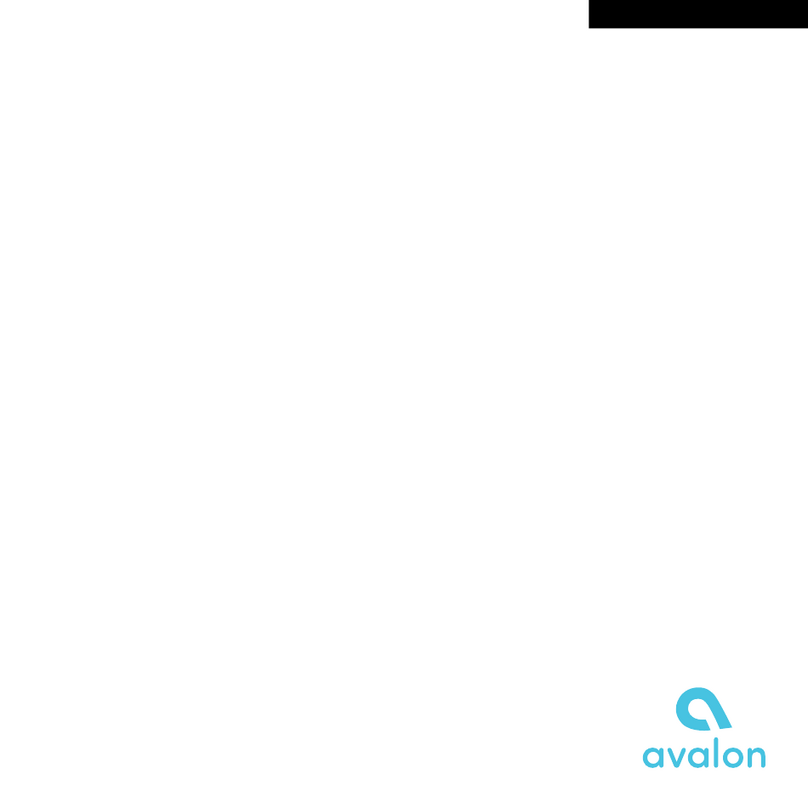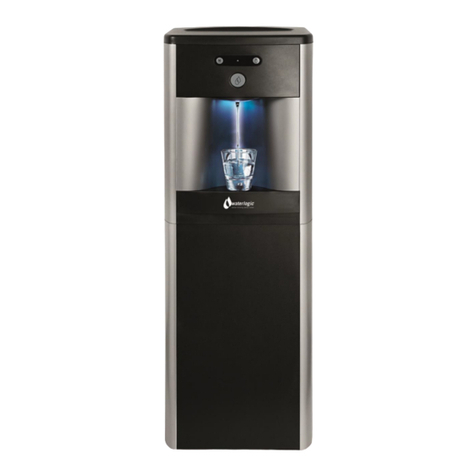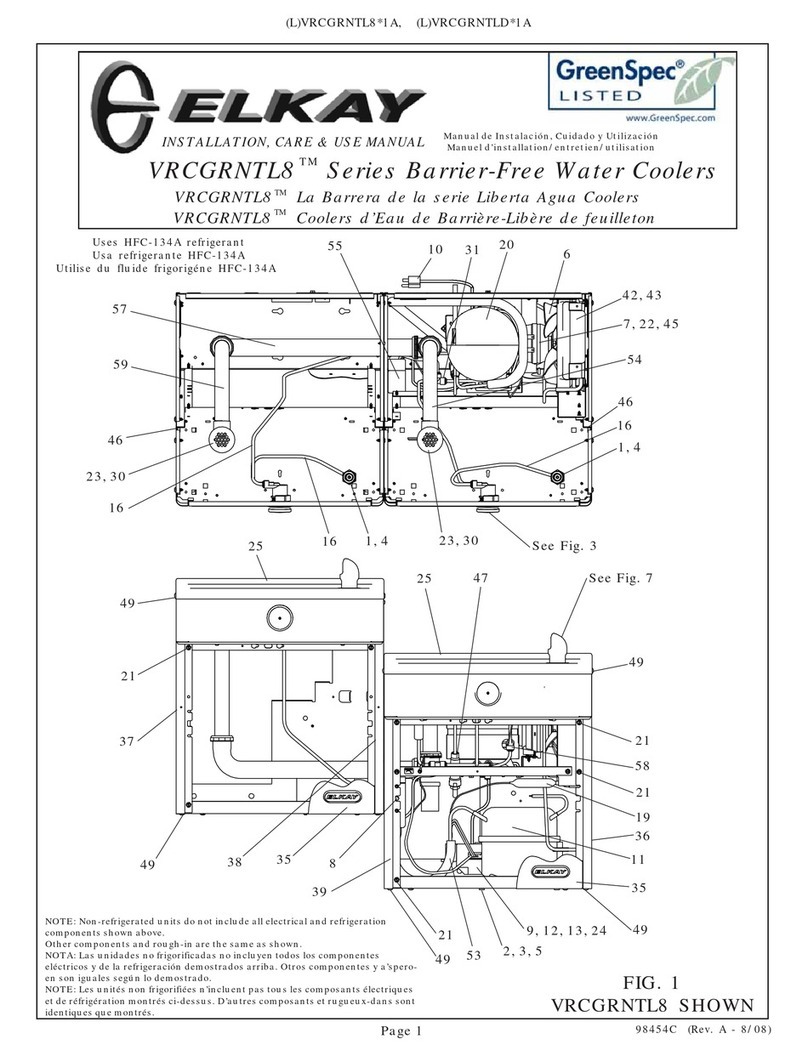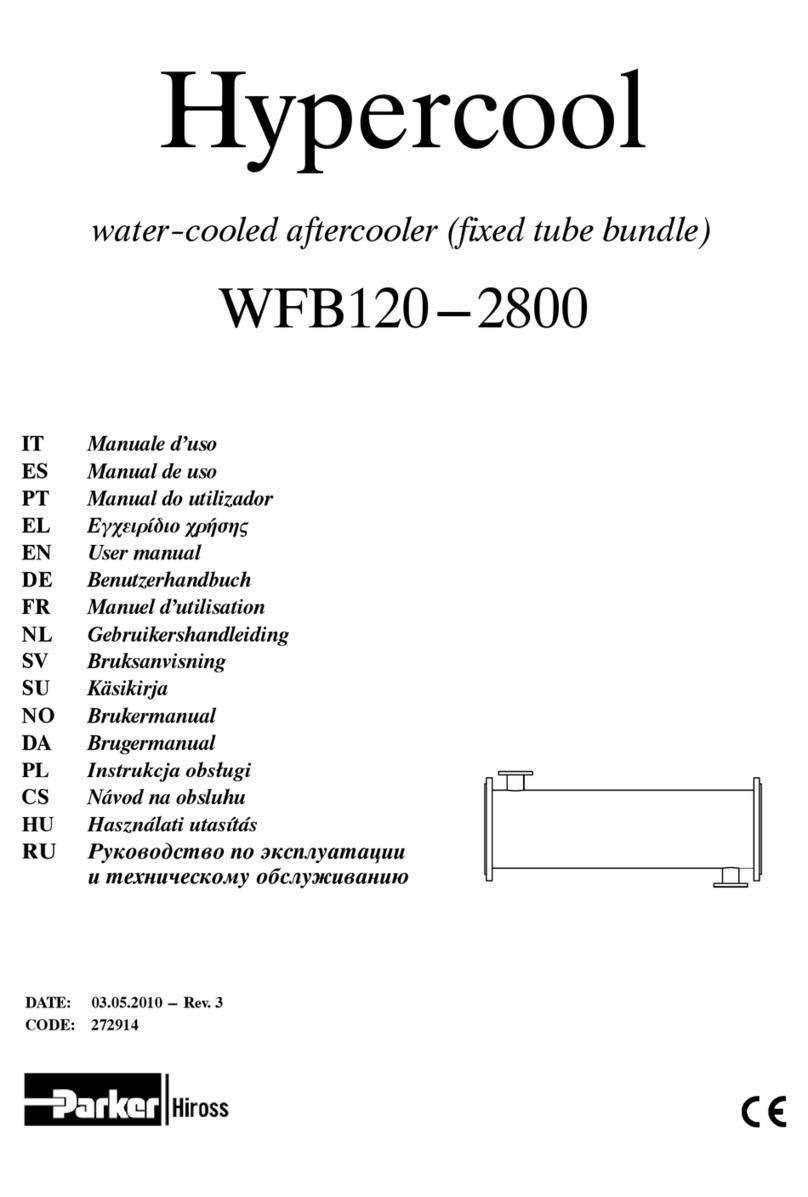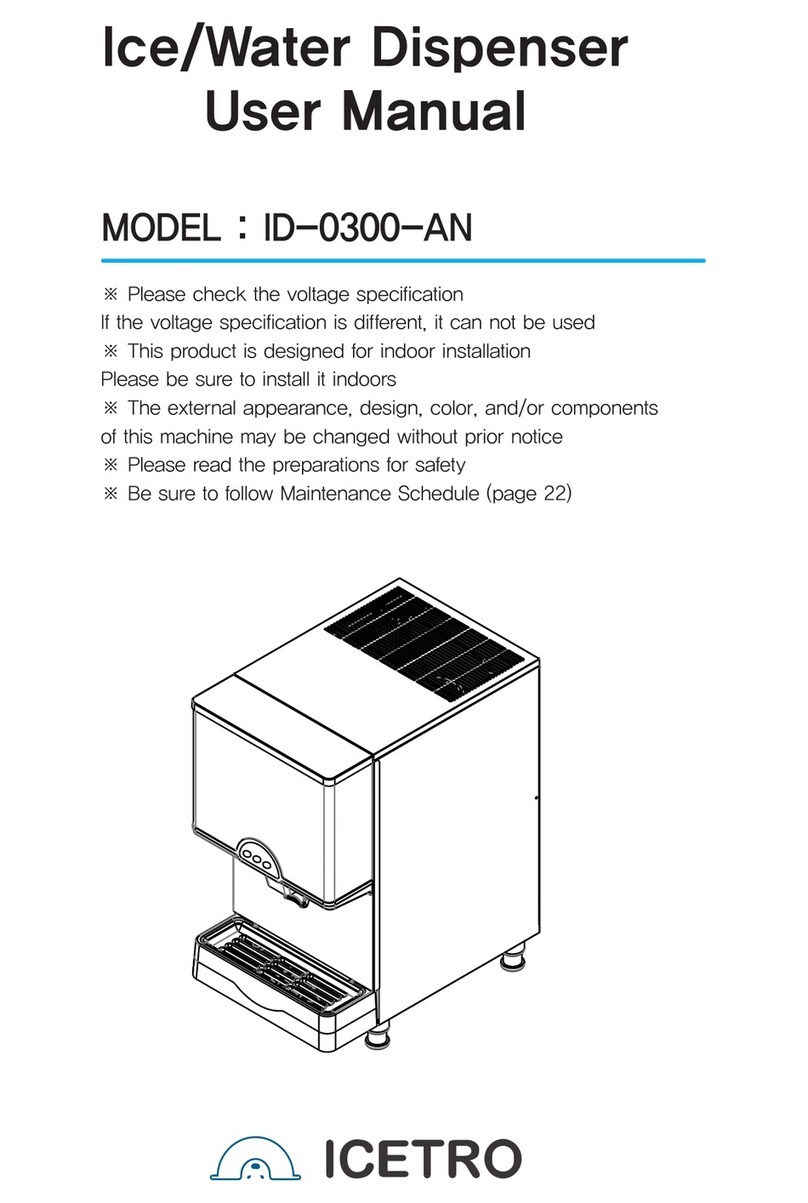Filtration Group FG Fluid Solutions AF 73-76 S User manual

Translation of the original instructions with assembly instructions
Automatic metal-edge filters with radial scraper cleaning
AF 73 - 76 S
AF 93 - 96 S
Welded Type
Material No. of Instruction Manual
79301615

Page 2
Translation of the original instructions with assembly instructions AF 73 - 76 S/AF 93 - 96 S, Filtration Group GmbH, 11.07.19,
Mat. No. 79301615, Version 13
1 Contents
1Contents...................................................................... 2
2General safety instructions....................................... 3
2.1 Safety instructions for installation and
operating personnel.......................................... 3
2.2 Warning structure.............................................. 3
2.3 Warning symbols used...................................... 3
2.4 Other symbols used.......................................... 3
3Glossary...................................................................... 4
4General information................................................... 4
4.1 Manufacturer..................................................... 4
4.2 Information about the Instruction Manual.......... 4
4.3 ATEX type key.................................................. 4
5Intended application .................................................. 5
6Functional description............................................... 5
6.1 Principle of the process..................................... 5
6.2 Main components of the metal-edge filter......... 6
6.3 Functional principle of a metal-edge filter ......... 6
7Technical data............................................................ 7
7.1 General data (without options).......................... 7
7.2 Order-specific data............................................ 7
8Transport and storage............................................... 7
9Assembly instructions............................................... 7
9.1 Mechanical installation...................................... 8
9.2 Special mounting instructions for the drain
pipe................................................................... 8
9.3 Electro-pneumatic connections......................... 8
9.3.1 Connection to customer's control........... 8
9.3.2 Connection to FG controller (optional)... 9
9.4 Control variants................................................. 9
9.4.1 Time-controlled cleaning, manual
draining.................................................. 9
9.4.2 Time-controlled cleaning and draining... 9
9.4.3 Time-controlled cleaning, counter-
controlled draining ................................. 9
9.4.4 Differential pressure/time-controlled
cleaning................................................. 9
10 Start-up ..................................................................... 10
10.1 Functional test ................................................ 10
10.2 Programming the operating settings............... 10
11 Normal operation ..................................................... 11
12 Shutting down the metal-edge filter ....................... 11
12.1 Temporary shut-down..................................... 11
12.2 Prolonged shut-down (> 48 h)......................... 11
12.3 Emergency shut-down.................................... 11
13 Troubleshooting....................................................... 12
14 Maintenance..............................................................12
14.1 Inspection and maintenance schedule............13
14.2 Removing the filter insert ................................13
14.3 Cleaning the filter............................................14
14.3.1 Cleaning the filter insert.......................14
14.3.2 Cleaning the filter housing ...................14
14.4 Replacing the filter element.............................14
14.4.1 To remove the filter element................14
14.4.2 To install the filter element...................14
14.5 Replacing the scraper.....................................15
14.6 Replacing the stuffing box...............................15
14.7 Replacing the bearing bush ............................16
14.7.1 Instructions for type AF 73...................16
14.7.2 Instructions for type AF 74 - 76............16
14.8 Replacing the approach disk...........................16
14.8.1 Instructions for type AF 73...................16
14.8.2 Instructions for type AF 74 - 76............16
15 Spare parts................................................................17
16 Declaration of incorporation ...................................18
17 Declaration of conformity........................................22
18 Index..........................................................................23

Page 3
Translation of the original instructions with assembly instructions AF 73 - 76 S/AF 93 - 96 S, Filtration Group GmbH, 11.07.19,
Mat. No. 79301615, Version 13
2 General safety instructions
2.1 Safety instructions for installation and
operating personnel
This Instruction Manual contains important safety
instructions which must be heeded at all times during
installation, normal operation and maintenance.
Non-observance can result in the following risks to persons
and the environment as well as in damage to the machine or
system:
Failure of critical functions of the machine or system or of
its component parts.
Danger to persons from electrical or mechanical effects
as well as from chemical reactions.
Danger to the environment owing to the leakage of
hazardous substances.
Before installation/start-up:
Read the Instruction Manual carefully.
Make sure that installation and operating personnel are
adequately trained.
Make sure that the contents of the Instruction Manual are
fully understood by the responsible persons.
Define areas of responsibility and competence.
Prepare a maintenance schedule.
During operation of the system:
Keep the Instruction Manual handy at the place where
the system is used.
Heed the safety instructions. Always operate the
machine/system in accordance with its ratings.
If in doubt:
Consult the manufacturer.
2.2 Warning structure
Where possible, warnings are structured according to the
following system:
Signal word
Possibly
with
symbol
Nature and source of the danger
Potential consequences of non-
observance.
Action to avert the danger.
2.3 Warning symbols used
DANGER!
Immediate danger!
Non-observance will result in serious or fatal injury.
WARNING!
Potentially dangerous situation!
Non-observance can result in serious or fatal injury.
CAUTION!
Potentially dangerous situation!
Non-observance can result in minor or moderate
injuries.
CAUTION! (without a symbol)
Potentially dangerous situation!
Non-observance can result in property damage.
2.4 Other symbols used
Danger from high voltage
Danger information about explosion
protection
Information about environmental protection
Wear protective clothing!
Wear goggles!
Wear a respirator!
Hand symbol:
Indicates general information and
recommendations
Bullet:
Indicates the order in which actions are to be
carried out
Arrow:
Indicates responses to actions

Page 4
Translation of the original instructions with assembly instructions AF 73 - 76 S/AF 93 - 96 S, Filtration Group GmbH, 11.07.19,
Mat. No. 79301615, Version 13
3 Glossary
Aerosol:
Distribution of minute liquid droplets (or solid particles) in a
gas.
Agglomerate:
Structure made up of several small particles which have
formed a ball (conglomerated) as a result of physical forces.
Cartridge (coiled):
Cylindrical structure consisting of a core element with
triangular wires wound or welded onto it. The suspension
that must be filtered flows inward. Solids are retained on the
outer surface of the cartridge.
Cleaning:
The coiled cartridge is turned and cleaned by a stationary
scraper.
Concentrate:
Quantity of residues enriched with solids. Is discharged from
the filter periodically. Further treatment may be necessary,
depending on the application.
Cooling lubricant:
Cooling lubricant acc. to DIN 51385.
Differential pressure (delta p):
Difference between the pressure on the dirty side and
the clean side.
Draining:
The drain valve is opened. The solids that have collected in
the collection cone are discharged.
Filter cake:
Layer that is built up by the solids retained on the surface of
the coiled cartridge.
Filtered fluid:
Substance that is filtered.
Filtration mode:
The metal-edge filter operates normally and the drain valve
is closed.
Homogenisation:
A system of substances is given a uniform composition.
Initial differential pressure:
Differential pressure at the start of the filtration process
(when the coiled cartridge is “clean”).
Precontrol:
5/2-way magnetic valves actuated by the controller, which
switch pneumatic control valves.
Siphon:
U-shaped pipe. A siphon cannot be discharged without a
valve.
Suspension (raw suspension):
System of substances that must be filtered, generally
consisting of solids in a liquid.
4 General information
4.1 Manufacturer
Filtration Group GmbH
Schleifbachweg 45
D-74613 Öhringen
Phone +49 7941 6466-0
Fax +49 7941 6466-429
www.fluid.filtrationgroup.com
4.2 Information about the Instruction Manual
FG Mat. No.: .......................................................79301615
Date: ....................................................................11.07.19
Version: ................................................................... 13
4.3 ATEX type key
II
2
G
c
T3
1.
2.
3.
4.
5.
1.
II
Valid for use above ground
2.
Use in:
Zone 1
2
Zone 2
3
3.
Atmosphere
G = Gas
D = Dust
G
G
4.
Types of protection
c= Constructional safety
5.
T3 = The maximum surface temperature on the
filtration device is 200°C.
(Field for rating plate)
(Space for ATEX name-plate)
The Ex type of protection is only valid in conjunction with the
declaration of conformity.

Page 5
Translation of the original instructions with assembly instructions AF 73 - 76 S/AF 93 - 96 S, Filtration Group GmbH, 11.07.19,
Mat. No. 79301615, Version 13
5 Intended application
DANGER!
PROHIBITED:
Use for other purposes without prior consultation with
the manufacturer.
Use in potentially explosive atmospheres, unless
explicitly mentioned in the contract documentation.
Use with smouldering, burning or adhesive particles.
Use with highly explosive dusts (e.g. aluminium dust,
explosives, etc.).
CAUTION!
This FG metal-edge filter is only allowed to be used in
accordance with the operating conditions specified in the
contract documentation and in the Instruction Manual. All
forms of use which deviate from or exceed the limits of
use described above are considered to be contrary to the
intended purpose. The manufacturer shall not be liable
for any damage resulting from such use.
CAUTION!
Conditionally allowed:
Use of solvents in consultation with the manufacturer.
Reverse flow through the filter (pressure < 0.6 bar).
FG metal-edge filters are designed for filtering liquids or
pastes with a viscosity of up to 500,000 mPas. They can be
cleaned without interrupting operation. The cleaning process
can be either manual or automatic.
Types of application:
CLM filtration
Product filtration
Pre-separation within filter cascades
Protective filtration before or after certain process steps
Process filtration
Destruction of unwanted agglomerates
6 Functional description
6.1 Principle of the process
Filtration
A triangular-shaped wire is wound immovably on a
threaded, profiled support tube. The thread lead determines
the gap width and thus the fineness of the filter. The
suspension flows inwards through the filter element. The
particles settle on the outside of the element. The triangular
geometry results in a significant increase in the cross-
section after the narrowest gap. Clogging is thus practically
impossible.
Fig. 1: Principle of separation at the filter element
Cleaning
The particles that settle on the cartridge or on the split tube
cause the differential pressure between the muddy side and
the clean side of the filter element to increase.
If this pressure difference exceeds a (settable) limit value, a
cleaning process is started. The filter element begins to
rotate. The scraper scrapes the filter cake off of the filter
element.
Fig. 2: Cleaning
Filter element
Profiled support tube
Narrowest gap
Increase in cross-section
Triangular
wire winding
Filter cake
Scraper
Profiled
support
tube

Page 6
Translation of the original instructions with assembly instructions AF 73 - 76 S/AF 93 - 96 S, Filtration Group GmbH, 11.07.19,
Mat. No. 79301615, Version 13
Start of cleaning process
The cleaning process can be started in the following ways:
manually,
with the differential pressure switch,
by means of a time switch,
by the control of a machine tool.
6.2 Main components of the metal-edge filter
Fig. 3: Diagram of the main components
1
Gear motor for driving the filter element
2
Gear (hidden)
3
Suspension inlet
4
Pneumatically or manually actuated drain valve
5
Filtrate outlet
6
Differential pressure measuring (optional)
7
Filter casing
8
Mounting connections
9
Vent plug
6.3 Functional principle of a metal-edge filter
1
The raw suspension flows into the metal-edge filter.
2
The suspension flows through the filter element . In case of
metal-edge filter with pre-separation (optional) the
suspension flows into the outer space downwards and is
reversed below the coils. A part of the solid matters is
already separated.
3
The (pre-cleaned) suspension flows through the filter
element.
The particles settle on this element.
Fig. 4: Functional principle of a metal-edge filter
4
The filtrate enters the clean room and leaves the filter.
5
The cleaning process is started either when the maximum
differential pressure is reached (optional) or after a preset
time.
6
The filter element is rotated by means of the gear motor or
the ratchet. The stationary scraper scrapes off the
separated particles.
The filtration process is not interrupted.
7
The enriched particles on the raw side can be emptied out
periodically.
1
2
3
5
9
5
6
7
8
1
2
3
6
4
5
7

Page 7
Translation of the original instructions with assembly instructions AF 73 - 76 S/AF 93 - 96 S, Filtration Group GmbH, 11.07.19,
Mat. No. 79301615, Version 13
Pre-separation (optional)
The rough suspension flows first tangentially into an outer
space. A flow whirl moving downwards is created. Below the
pre-separation bushing the flow is reversed. The whirl al
well as the flow reverse cause centrifugal forces on the solid
matter particles. In particular in case of liquids of low
viscosity the pre-separation is improved by this procedure.
Fig. 5: Tangential supply of metal-edge filters with pre-
separation (optional)
7 Technical data
7.1 General data (without options)
Electrical power demand* .............250 VAC/400 V 3NPE
AF 73 S:..............................................................0,18 kW
AF 74 S, 75 S:.....................................................0,25 kW
AF 76 S:..............................................................0,55 kW
AF 93 S:..............................................................0,18 kW
AF 94 S, 95 S:.....................................................0,25 kW
AF 96 S: 0,55 kW
Noise emission (peaks):..................................< 70 dB(A)
Dimensions: .............................................See data sheet
Min. height for dismantling above filter:....See data sheet
Total dry weight without valves: ...............See data sheet
Max. permissible operating pressure: ......See data sheet
Max. permissible differential pressure
in the filter cartridge:............................................< 30 bar
Max. permissible differential pressure
in the split tube:...................................................< 10 bar
*See also name-plate on gear motor
7.2 Order-specific data
The name-plate is rendered invalid if the
coiled cartridge or the filter insert are
modified.
Please request a new name-plate from
the manufacturer.
This data is order-specific and can be taken from the
name-plate.
8 Transport and storage
Transport
Always transport horizontally in the original packaging
Avoid vibrations
Storage
Always store horizontally in the original packaging
Always store in a dry, frost-free room
Seaworthy packaging is specified in the
contract documentation as an option.
9 Assembly instructions
DANGER!
Explosion hazard!
Risk of injury to persons or damage to
property.
This FG metal-edge filter is only allowed to
be installed and operated in the category
specified in the contract documentation
(offer/order confirmation).
If no category is specified: Do not operate
the FG metal-edge filter in a hazardous
area!
The owner is responsible for zoning.
The owner of the plant is solely responsible
for implementing the appropriate explosion
protection measures!
If in doubt, please consult the responsible
authorities.
DANGER!
Explosion hazard!
Risk of injury to persons or damage to
property.
The system is only allowed to be installed,
accepted and tested by a suitably qualified
person (99/98/EC).
WARNING!
If the system is installed by unauthorised
persons
Risk of injury
All warranty claims are rendered invalid
The system must be installed by a suitably trained
person!
Preseparator bushing
tangential supply

Page 8
Translation of the original instructions with assembly instructions AF 73 - 76 S/AF 93 - 96 S, Filtration Group GmbH, 11.07.19,
Mat. No. 79301615, Version 13
9.1 Mechanical installation
DANGER!
Explosion hazard!
Risk of injury to persons or damage to
property.
Check the conductivity between all
components!
Note the maximum permissible resistance:
R < 10 .
Make sure that earthing is provided by the
customer.
It must be possible to remove the filter insert
in order to carry out maintenance work.
Prepare a suitable seat on which to mount the filter
(e.g. supports).
Be sure to allow the required height for dismantling and
draining (see data sheet).
Replace two opposite screws at the flange cover of the
metal-edge filter by lifting screws.
Lift metal-edge filter at the lifting screws out of packaging.
Bolt the metal-edge filter to the prepared seat.
Remove the caps from the connections.
Connect the pipes.
Pressure relief
Design measures must be incorporated to prevent
inadmissible excess pressure on the dirty side.
Install a pressure relief device if necessary.
Fig. 6: Mechanical installation
9.2 Special mounting instructions for the drain
pipe
WARNING!
The full inlet pressure is present at the drain valve!
Make sure that the drain pipe is securely fastened.
Do not drain concentrate into the atmosphere.
Provide splash protection if necessary.
Lay the pipes without a syphon if possible.
Watch out for clogging as a result of sedimented
concentrate!
9.3 Electro-pneumatic connections
DANGER!
Danger of electric shock!
Risk of serious or fatal injury in case of
contact with electrical components.
All electrical installation work must be
carried out by a suitably qualified
electrician.
9.3.1 Connection to customer's control
Gear motor
See the rating plate or the contract documentation for the
connection data (please also refer to the connection
diagram for the terminal box).
Connect the gear motor .
Provide adequate protection for the motor.
Fig. 7: Connection of the standard gear motor
Differential pressure switch (optional)
Refer to the enclosed manufacturer’s documentation for
details of the connections.
Automatic drain valve (optional)
Provide a suitable compressed air supply.
Provide a suitable 5/2-way valve for pilot control.
Refer to the contract documentation for
special types.
Dismantling height
Draining height
(400 -600 mm)
Filtrate
Inlet
Drain
400V 3~ 230V 3~

Page 9
Translation of the original instructions with assembly instructions AF 73 - 76 S/AF 93 - 96 S, Filtration Group GmbH, 11.07.19,
Mat. No. 79301615, Version 13
Fig. 8: Electro-pneumatic connections
Required on the switch box:
Manual release for cleaning
Manual release for drain valve
9.3.2 Connection to FG controller (optional)
Connect the incoming feeder, gear motor, differential
gauge/switch (optional) and precontrol valve (optional) in
accordance with the enclosed circuit diagram.
9.4 Control variants
The cleaning process is controlled differently according to
the application. The control variants described here are
examples and are simply intended to serve as a guide.
9.4.1 Time-controlled cleaning,
manual draining
Fig. 9: Time-controlled cleaning
Parameter
Description
Recommended
value
T0
Time interval
60 s - 24 h
9.4.2 Time-controlled cleaning and draining
Fig. 10: Time-controlled cleaning/draining
Parameter
Description
Recommended
value
T0
Time interval for cleaning
60 s - 24 h
T1
Time interval for drain
valve
60 s - 24 h
T2
Opening time of drain
valve
2 - 5 s
9.4.3 Time-controlled cleaning,
counter-controlled draining
Fig. 11: Time-controlled cleaning, counter-controlled
draining
Parameter
Description
Recommended
value
T0
Time interval for cleaning
60 s - 24 h
Z0
Cleaning counter
3 - 5
T2
Opening time of drain
valve
2 - 5 s
9.4.4 Differential pressure/time-controlled cleaning
Fig. 12: Differential pressure/time-controlled cleaning
Parameter
Description
Recommended
value
T0
Max. time interval
6 - 600 s
1 2 3 1 2 13
= Pneumatic
= Electrical
5/2-way valve
Compressed air
Cleaning
Drain valve
Cleaning
T0
T1
T2
p signal
Cleaning
T0
T0
Drain valve
Cleaning
T0
T2
Z0

Page 10
Translation of the original instructions with assembly instructions AF 73 - 76 S/AF 93 - 96 S, Filtration Group GmbH, 11.07.19,
Mat. No. 79301615, Version 13
10 Start-up
DANGER!
This FG metal-edge filter is not allowed to be put into
operation until it has been established that the
machine/system in which it is to be installed complies
with the requirements of the applicable EC directives,
harmonised standards, European standards or equivalent
national standards.
DANGER!
Explosion hazard!
Risk of injury to persons or damage to
property.
The FG metal-edge filter must be
completely vented prior to start-up for
use with all media which are capable of
forming explosive gases.
The FG metal-edge filter must be
completely filled with liquid.
Take steps to prevent air pockets.
DANGER!
Danger due to high pressure in the filter!
Risk of injury to persons or damage to property
Do not allow concentrate to spatter into the
atmosphere.
Check that all the caps have been removed from the
connections.
Remove all foreign particles from the filter.
Check the pipe unions.
Tighten the bolts.
Rinse the pipes.
10.1 Functional test
Direction of rotation of the gear motor
Unscrew the cap of the gear motor.
Start up the gear motor briefly (<1 s).
Compare the direction of rotation of the shaft with that
shown by the arrow (clockwise direction).
Reverse the terminal connections of the gear motor if
necessary.
Screw the cap of the gear motor back on again.
Fig. 13: Direction of rotation of the gear motor
To check the differential gauge/switch (optional)
Refer to the enclosed manufacturer’s documentation.
Check the function of the drain valve (optional)
Supply compressed air to the pilot valve.
Actuate the manual release for the pilot valve.
The drain valve opens.
Set the manual release to the OFF position.
The drain valve closes.
10.2 Programming the operating settings
Switch on the control.
Carefully open the feed valve.
Vent the filter.
Note the initial differential pressure (optional).
Settings for time-controlled cleaning
Set the times according to the operating conditions and
correct them if necessary.
Settings for differential pressure-controlled cleaning
with a differential gauge/switch
Refer to the manufacturer’s documentation.
Adjust the set differential pressure to the setpoint
(see contract documentation).
Initial differential pressure
The initial differential pressure varies according to the
application.
General guide:
Installation on discharge side: delta p ≤0.3 bar
Installation on suction side: delta p ≤0.03 –0.1 bar
Gear motor cap
Drive shaft
(clockwise)

Page 11
Translation of the original instructions with assembly instructions AF 73 - 76 S/AF 93 - 96 S, Filtration Group GmbH, 11.07.19,
Mat. No. 79301615, Version 13
Fig. 14: Initial differential pressure
After cleaning, the differential pressure
(delta p) must return almost to the original
initial differential pressure.
If it does not, the cleaning function is faulty
(in this case, please consult the
manufacturer).
11 Normal operation
DANGER!
Danger due to high pressure in the filter!
Risk of injury to persons or damage to property
Do not allow concentrate to spatter into the
atmosphere.
Always dispose of concentrate in a manner
which does not pollute the environment!
Consult the responsible authorities before
deciding upon the most suitable disposal
method.
The following must be monitored daily during normal
operation:
Differential pressure,
Concentrate tank level,
Control functions.
Rinsing the drain line
CAUTION!
A high proportion of fine dirt particles in a long
pipe can lead to clogging!
Risk of injury to persons or damage to property
Rinse the drain line daily/weekly, depending on the
application.
Open the drain valve manually for approx. 10 - 15 s.
The drain line is rinsed.
12 Shutting down the metal-edge filter
12.1 Temporary shut-down
On the installed metal-edge filter controller:
Switch OFF the main switch.
12.2 Prolonged shut-down (> 48 h)
Start a cleaning process manually.
Remove the filter insert (section 14.2).
Clean the filter insert (section 14.3.1).
Reinstall the filter insert.
Fill the metal-edge filter completely with liquid.
Switch OFF the main switch.
12.3 Emergency shut-down
Switch OFF the main switch.
The power supply is interrupted.
Filter on
discharge side
Filter on
suction side

Page 12
Translation of the original instructions with assembly instructions AF 73 - 76 S/AF 93 - 96 S, Filtration Group GmbH, 11.07.19,
Mat. No. 79301615, Version 13
13 Troubleshooting
Fault
Possible cause
Remedy
Gear motor
does not turn
Motor fuse tripped
RESET motor fuse
Check gear motor
Filtrate solidified
Clean filter
Valve does not
open
Compressed air
pressure too low
Increase pressure
Pilot valve
defective
Check pilot valve
Pilot valve not
connected
correctly
Check electrical
and pneumatic
connections
Initial
differential
pressure no
longer obtained
Solids
concentration too
high
Improve
prefiltration
process
Gear motor
rotating in wrong
direction
Check direction of
rotation
Cleaning time too
short
Prolong cleaning
time (min. gear
motor speed: 1-2
revolutions)
Increased
concentration
of dirt on clean
side
Filter element
defective
Check filter
element and if
necessary renew
Seals brittle
Check seals and if
necessary renew
Leakage rate at
shaft seal too
high
Gear motor
does not turn
Tighten shaft seal
and if necessary
renew
14 Maintenance
DANGER!
Explosion hazard!
Risk of injury to persons or damage to
property.
Work is only allowed to be carried out in
hazardous areas if appropriate safety
precautions are implemented.
Safety precautions must be implemented
by the owner.
WARNING!
If the system is maintained by unauthorised
persons
Risk of injury
All warranty claims are rendered invalid
The system must be maintained by a suitably trained
person!
Before all maintenance work:
Shut down the metal-edge filter (section 12).
Take steps to prevent the machine/system from being
switched on again by unauthorised persons.
Wear protective clothing and equipment appropriate to
the hazard potential of the medium (e.g. goggles,
respirator, protective clothing, etc.).
Carry out the maintenance work.
Start up the metal-edge filter again (section 10).

Page 13
Translation of the original instructions with assembly instructions AF 73 - 76 S/AF 93 - 96 S, Filtration Group GmbH, 11.07.19,
Mat. No. 79301615, Version 13
14.1 Inspection and maintenance schedule
Refer also to the contract documentation.
Interval
Component
Activity
Weekly
Metal-edge filter
Check for leakage
Check the differential
pressure
Pipes
Clean
Monthly
Coiled cartridge
Check for wear and if
necessary clean
Metal-edge filter
Check the
conductivity between
all components.
Note the maximum
permissible
resistance: R < 10 .
Yearly or
when
cooling
lubricant
replaced
Bearings
Check the clearance
Valves
Check correct
functioning
Metal-edge filter
Clean
Seal kit
Check for leakage
The necessary maintenance work is
dependent on the particular application.
Please consult the manufacturer if
necessary.
14.2 Removing the filter insert
DANGER!
The metal-edge filter is pressurised!
Risk of injury to persons or damage to property!
Make sure that the pipe is depressurised prior to
opening the metal-edge filter.
1
Close the filter inlet and drain.
Relieve the pressure in the pipe if necessary.
2
Open the vent valve.
Open the drain valve.
The filter is drained.
3
Close the compressed air supply.
4
Disconnect the gear motor.
Fig. 15: Disconnecting the filter
5
At the gear drive flange: loosen screws.
Take of gear drive from the stand.
6
Loosen screws at the filter cover.
Put in ring bolts.
7
Lift off filter insert vertically to the top.
Do not chock!
Fig. 16: Detaching the gear motor and levering off the cover
3
1 1
2
4
2
5
6
7

Page 14
Translation of the original instructions with assembly instructions AF 73 - 76 S/AF 93 - 96 S, Filtration Group GmbH, 11.07.19,
Mat. No. 79301615, Version 13
8
Lay the filter insert down carefully on a level surface,
taking care not to damage the filter element.
Replace the cylindric bolt at the traverse by a ring bolt.
9
Place filter insert on motor stand.
10
Protect filter insert against falling.
Fig. 17: Turn and protect filter insert
To install
In reverse order.
Lower the filter insert into position without tilting it.
14.3 Cleaning the filter
Remove the filter insert (section 14.2).
14.3.1 Cleaning the filter insert
WARNING!
Danger of aerosol formation!
All work must be carried out in a room with a suitable
extraction system!
Wear protective clothing and equipment appropriate to
the hazard potential of the medium (e.g. goggles,
respirator, protective clothing, etc.).
Remove any coarse impurities by mechanical means.
Wash the filter insert in a suitable cleaning solution.
Carefully blow out the filter insert with a steam jet or
compressed air.
Clean (or if necessary renew) and oil the seals.
14.3.2 Cleaning the filter housing
Wear protective clothing and equipment appropriate to
the hazard potential of the medium (e.g. goggles,
respirator, protective clothing, etc.).
Remove any coarse impurities by mechanical means.
Wash the filter housing in a suitable cleaning solution.
14.4 Replacing the filter element
WARNING!
If the system is maintained by unauthorised
persons
Risk of injury
All warranty claims are rendered invalid
The system must be maintained by a suitably trained
person!
14.4.1 To remove the filter element
CAUTION!
Danger of injury to hands!
Scrapers are pre-tensioned by means of springs.
Never attempt to reach between the scraper and the
coil!
Dismount and clean filter insert (s.a.).
1
Lift off the scraper carefully.
Fix scraper with the screw.
2
Loosen screws of the cartridge cover.
Pull cartridge cover with end disc out of the cartridge
body.
3
Loosen safety nut.
4
Pull filter cartridge carefully out of the brackets.
Filter insert rotated 180°
Fig. 18: Removing the filter cartridge
14.4.2 To install the filter element
Oil the O-rings.
Check and clean the approach disk, and if necessary
renew.
Install in reverse order.
In case of multi-cartridge filters:
Put in properly the intermediate ring.
Fix safety nut with the required torque (see schedule).
Typ AF
72
73
74
75
76
Drehmoment [Nm]
20
20
20
20
25
8
10
9
2 1
3 4

Page 15
Translation of the original instructions with assembly instructions AF 73 - 76 S/AF 93 - 96 S, Filtration Group GmbH, 11.07.19,
Mat. No. 79301615, Version 13
14.5 Replacing the scraper
Remove and clean the filter insert (chapter 14.4).
Lift off the scraper carefully.
Fix scraper with the screw (s.a.).
Unscrew the hexagon nuts on the scraper.
Replace the scraper.
Fig. 19: Replacing the scraper
Important when installing the scraper:
The leg springs must rest in the slots provided.
The scraper must rest cleanly against the filter element.
The scraper must not be tilted.
Check all screws and bolts, and tighten them if
necessary.
Tighten the cover bolts in accordance with
EN 286/ 6.4.5/ 6.
14.6 Replacing the stuffing box
DANGER!
Danger of electric shock!
Risk of serious or fatal injury in case of
contact with electrical components.
All electrical installation work must be
carried out by a suitably qualified
electrician.
1
De-energize the gear motor and disconnect it.
Unscrew the hexagon bolts on the motor stator.
Carefully lift the gear motor up and remove it from the
shaft.
2
Loosen and lift off motor stand.
3
Unscrew setscrew and lift off gear.
Fig. 20: Removing the gear motor
5
Loosen hexagon bolts.
6
Remove cover and cylinder.
7
Remove the Belleville springs and the gland.
8
The packing rings are now freely accessible and can be
replaced.
Hexagon
nuts
Scraper
1
2
3

Page 16
Translation of the original instructions with assembly instructions AF 73 - 76 S/AF 93 - 96 S, Filtration Group GmbH, 11.07.19,
Mat. No. 79301615, Version 13
Fig. 21: Stuffing box accessible
To install the stuffing box
Fit the stuffing box elements one at a time with an offset
of 180°.
Fit the Belleville springs, the sleeve and the cover.
Tighten the hexagon bolts.
The stuffing box requires very little maintenance. Slight
leaking is perfectly normal and serves to lubricate the unit.
14.7 Replacing the bearing bush
The bearing bush must always be
replaced by a TRAINED MECHANICAL
FITTER.
Keep spare part drawing of the metal-
edge filter available.
(It. = Item numbers of the spare part
drawing)
14.7.1 Instructions for type AF 73
Dismount gland (see section 14.6).
Dismount and clean filter insert (see section 14.2).
Loosen hexagon nut (It.32) and pull off the complete
cartridge brackets.
Loosen cylinder bolts (It.41) and pull off flanged ring
(It.43).
Pull off bearing bush (It.40).
Remove bearing bush.
Press new bearing bush with pin uniformely into the seat.
Reinstallation in reverse order.
14.7.2 Instructions for type AF 74 - 76
Dismount and clean filter insert (chapter 14.2).
Loosen hexagon nut (It.58) and pull off the complete
cartridge brackets.
Remove bearing bush (It.56) and gearwheel (It.27).
Loosen hexagon bolt (It.15) and pull off bearing flange
(It.14).
Remove bearing bush (It.9).
Press new bearing bush with pin uniformely into the seat.
Mount bearing flange (It.14) and gearwheel (It.27).
Press new bearing bush (It.56) with pin uniformely into
the seat.
Mount cartridge brackets, take care of correct teeth
position.
Further reinstallation in reverse order.
14.8 Replacing the approach disk
The bearing bush must always be
replaced by a TRAINED MECHANICAL
FITTER.
Keep spare part drawing of the metal-
edge filter available.
(It. = Item numbers of the spare part
drawing)
14.8.1 Instructions for type AF 73
Dismount and clean filter insert (chapter 14.2).
Remove all filter cartridges (chapter 14.4).
Loosen cylinder bolts (It.10) and remove centering ring
(It.9).
Remove lower approach disk (It.8) and clean tight seat.
Loosen hexagon nut (It.32) and pull off sealing plate
(It.6).
Remove upper approach disk (It.8) and clean tight seat.
Reinstallation with new approach disks in reverse order.
14.8.2 Instructions for type AF 74 - 76
Dismount and clean filter insert (chapter 14.2).
Remove all filter cartridges (chapter 14.4).
Loosen cylinder bolts (It.55) and remove centering ring
(It.26).
Remove lower approach disk (It.24) and clean tight seat.
Lift segment (It.21).
Remove upper approach disk (It.24) and clean tight seat.
Reinstallation with new approach disks in reverse order.
5
6
7
8

Page 17
Translation of the original instructions with assembly instructions AF 73 - 76 S/AF 93 - 96 S, Filtration Group GmbH, 11.07.19,
Mat. No. 79301615, Version 13
15 Spare parts
TYPE AF 73
Pcs.
Designation
Mat.-No.
Benennung
1
Set of gaskets VP FPM
Set of gaskets VP VMQ/FEP
77982143
77982150
Dichtungssatz VP FPM
Dichtungssatz VP VMQ/FEP
1
Set of bearing VP
78358947
Buchsensatz VP
1
scraper
71116805
Abstreifer
2
spring
79778846
Schenkelfeder
filter element → see name-plate
Filterelement →siehe Typenschild
TYPE AF 74
Pcs.
Designation
Mat.-No.
Benennung
1
Set of gaskets VP FPM
Set of gaskets VP VMQ
78319600
76191738
Dichtungssatz VP FPM
Dichtungssatz VP VMQ
1
Set of bearing VP
78318347
Buchsensatz VP
1
scraper
71116805
Abstreifer
2
spring
79778846
Schenkelfeder
filter element → see name-plate
Filterelement →siehe Typenschild
TYPE AF 75
Pcs.
Designation
Mat.-No.
Benennung
1
Set of gaskets VP FPM
Set of gaskets VP VMQ
79778135
79718206
Dichtungssatz VP FPM
Dichtungssatz VP VMQ
1
Set of bearing VP
78318354
Buchsensatz VP
1
scraper
71116805
Abstreifer
2
spring
79778846
Schenkelfeder
filter element → see name-plate
Filterelement →siehe Typenschild
TYPE AF 76
Pcs.
Designation
Mat.-No.
Benennung
1
Set of gaskets VP FPM
Set of gaskets VP VMQ
76198816
77982606
Dichtungssatz VP FPM
Dichtungssatz VP VMQ
1
Set of bearing VP
78321580
Buchsensatz VP
1
scraper
71116805
Abstreifer
2
spring
79778846
Schenkelfeder
filter element → see name-plate
Filterelement →siehe Typenschild
TYPE AF 93 - 96 S
Pcs.
Designation
Mat.-No.
Benennung
1
scraper
71116805
Abstreifer
2
spring
79778846
Schenkelfeder
filter element → see name-plate
Filterelement →siehe Typenschild
Please request a separate spare parts drawing and list of spare parts for special versions.

Page 18
Translation of the original instructions with assembly instructions AF 73 - 76 S/AF 93 - 96 S, Filtration Group GmbH, 11.07.19,
Mat. No. 79301615, Version 13
16 Declaration of incorporation
As defined by the EC Machinery Directive
The filter is only allowed to be started if the complete machine is also started up!

Page 19
Translation of the original instructions with assembly instructions AF 73 - 76 S/AF 93 - 96 S, Filtration Group GmbH, 11.07.19,
Mat. No. 79301615, Version 13

Page 20
Translation of the original instructions with assembly instructions AF 73 - 76 S/AF 93 - 96 S, Filtration Group GmbH, 11.07.19,
Mat. No. 79301615, Version 13
This manual suits for next models
1
Table of contents

